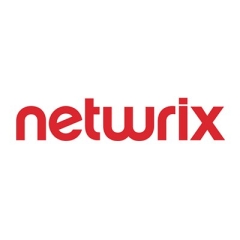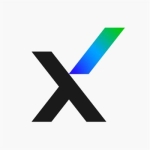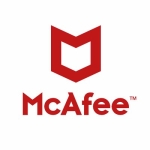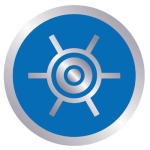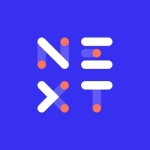What is our primary use case?
We bought it because we had a specific need for a single Macintosh computer. We're a defense contractor, so we have to meet very rigid compliance requirements, and Macintosh caused a lot of problems for our mainly Windows domain infrastructure. So, we found the Endpoint Protector tool and tested it, and it did what we wanted it to do.
We bought it for the Macintosh environment, but because we liked it, we rolled it out to our Windows environment as well.
How has it helped my organization?
The key point is that it allowed us to meet a complex cybersecurity requirement mandated by the government, and it was cost-effective. It is critical to our business because if we're not compliant, we can't bid on contracts.
It provides the ability to lock down a wide variety of USB devices. We've actually done it for pretty much everything that could potentially be an issue, such as keyboards, mice, USB devices, and CD-ROMs. This functionality is critical for us.
What is most valuable?
The device control is a big deal for us because we can actually lock out removable drives and different types of hardware. It allows us to have better control over what end-users plug into their computers, and we can have deny lists and tighten our security posture.
In terms of the granularity of the policies, it is fine. It does exactly what we need. It is granular enough, but it is not too much where it is impossible to tune. It has a nice balance.
In terms of ease of managing DLP in a hybrid environment, it has been very easy to use. It's a very intuitive product. There were no issues trying to figure stuff out.
What needs improvement?
The reports and analysis could be improved. There could be a little more data, and the logs could be a little more granular, but it's nothing major. It does what it needs to do, and it's fine.
The alerts could be a little bit more intuitive, but again, it's not a big deal. It's just if I had to choose something, that's what it would be.
Buyer's Guide
Netwrix Endpoint Protector
March 2025
Learn what your peers think about Netwrix Endpoint Protector. Get advice and tips from experienced pros sharing their opinions. Updated: March 2025.
847,862 professionals have used our research since 2012.
For how long have I used the solution?
We have not been using it for very long. We bought it about four or five months ago.
What do I think about the stability of the solution?
It has been rock solid. It has never crashed or blown up on us.
What do I think about the scalability of the solution?
We haven't gotten that far yet. We're using it for the initial rollout, and then in the future, we do plan to look more into the Content Aware Protection module to see if this is another add-on module in which we would be interested. After we start playing with the Content Aware Protection module and add modules, we'll know more about scalability, but right now, I don't have any input on that.
In terms of its usage, we currently have about a hundred devices.
How are customer service and support?
They were excellent. They were very responsive and helpful.
Which solution did I use previously and why did I switch?
We have had other things. One of the solutions that we used to use was GFI, but it got extremely expensive and over-complex, and it wasn't stable.
How was the initial setup?
It was easy. From deployment to config, it wasn't overly involved or overly complex. The lady we talked to at Endpoint helped us very quickly. We had a licensing issue with something, and their support was good.
Its deployment did not take very long. It took less than a day.
In terms of the deployment plan, it is simple enough where you don't need anything too complex. We just have a process that we follow. To add any new software, we have to try it first on a dirty network and validate it, and if all is good, then we put it in production.
In terms of its maintenance, primarily, our network engineer is responsible for configuring, reviewing, maintaining, and upgrading it. The rest of us look at the reports and the alerts from it.
What was our ROI?
I can't provide a specific return on investment. The return on investment is that this is a lot cheaper than if someone plugs in a USB key with malware and pollutes the whole network.
What's my experience with pricing, setup cost, and licensing?
From what we've seen, their pricing is a lot lower than the other stuff we've looked at. I actually don't have any concerns with their pricing. They were probably the most reasonable company out there for the features that were offered.
It was pretty straightforward in terms of licensing, and you just pay for the license.
Which other solutions did I evaluate?
We looked at some of the other options. I don't remember their names, but the costs were outrageous. They were just unobtainable for a small business like ours. The cost was a big driver for going for Endpoint Protector, and its features worked.
Some of the other solutions offered more in terms of data leakage protection, but again, they were too much for a small business. The cost was a big factor as well.
What other advice do I have?
It is critical to test it out. I would advise doing the trial first to make sure it absolutely works for what you need it to do. Being able to test it without paying is a big deal, and it lets you really drive it.
We don't use the EasyLock USB Enforced Encryption app to automatically encrypt the confidential data transferred to the USB storage. We don't allow USB storage. We use it purely to lock the device, and our encryption is handled by another tool.
In terms of role-based access features for admins, I don't handle a lot of the technical side of it. My network engineer handles it, so I don't have any input to provide, but I haven't heard any complaints.
For zero-day protection, we have other tools. I don't think we're using this feature.
I would rate Endpoint Protector an eight out of 10. It pretty much did what they stated it did. There were no surprises.
Disclosure: PeerSpot contacted the reviewer to collect the review and to validate authenticity. The reviewer was referred by the vendor, but the review is not subject to editing or approval by the vendor.

